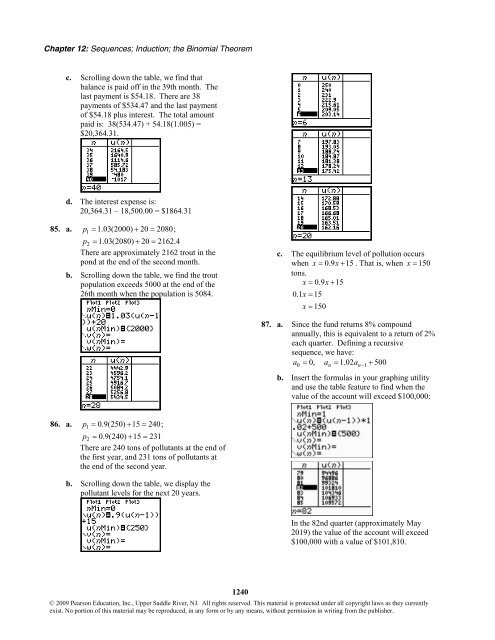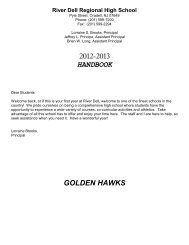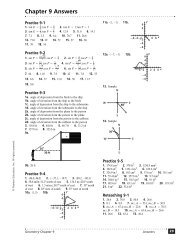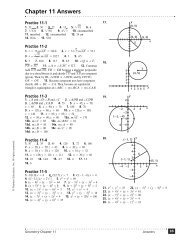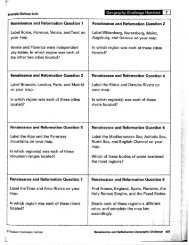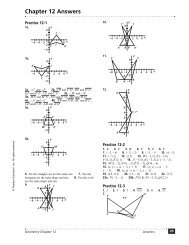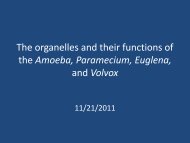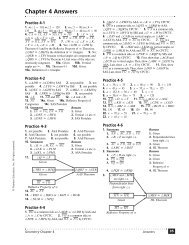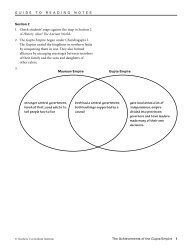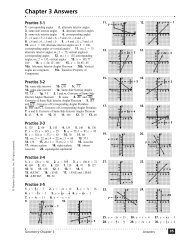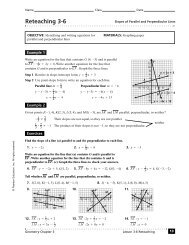Chapter 12 Sequences; Induction; the Binomial Theorem
Chapter 12 Sequences; Induction; the Binomial Theorem
Chapter 12 Sequences; Induction; the Binomial Theorem
Create successful ePaper yourself
Turn your PDF publications into a flip-book with our unique Google optimized e-Paper software.
<strong>Chapter</strong> <strong>12</strong>: <strong>Sequences</strong>; <strong>Induction</strong>; <strong>the</strong> <strong>Binomial</strong> <strong>Theorem</strong><br />
c. Scrolling down <strong>the</strong> table, we find that<br />
balance is paid off in <strong>the</strong> 39th month. The<br />
last payment is $54.18. There are 38<br />
payments of $534.47 and <strong>the</strong> last payment<br />
of $54.18 plus interest. The total amount<br />
paid is: 38(534.47) + 54.18(1.005) =<br />
$20,364.31.<br />
d. The interest expense is:<br />
20,364.31 – 18,500.00 = $1864.31<br />
85. a. p1<br />
= 1.03(2000) + 20 = 2080;<br />
p2<br />
= 1.03(2080) + 20 = 2162.4<br />
There are approximately 2162 trout in <strong>the</strong><br />
pond at <strong>the</strong> end of <strong>the</strong> second month.<br />
b. Scrolling down <strong>the</strong> table, we find <strong>the</strong> trout<br />
population exceeds 5000 at <strong>the</strong> end of <strong>the</strong><br />
26th month when <strong>the</strong> population is 5084.<br />
c. The equilibrium level of pollution occurs<br />
when x = 0.9x+ 15 . That is, when x = 150<br />
tons.<br />
x = 0.9x+<br />
15<br />
0.1x<br />
= 15<br />
x = 150<br />
87. a. Since <strong>the</strong> fund returns 8% compound<br />
annually, this is equivalent to a return of 2%<br />
each quarter. Defining a recursive<br />
sequence, we have:<br />
a0 = 0, an<br />
= 1.02an<br />
− 1+<br />
500<br />
b. Insert <strong>the</strong> formulas in your graphing utility<br />
and use <strong>the</strong> table feature to find when <strong>the</strong><br />
value of <strong>the</strong> account will exceed $100,000:<br />
86. a. p1<br />
= 0.9(250) + 15 = 240;<br />
p2<br />
= 0.9(240) + 15 = 231<br />
There are 240 tons of pollutants at <strong>the</strong> end of<br />
<strong>the</strong> first year, and 231 tons of pollutants at<br />
<strong>the</strong> end of <strong>the</strong> second year.<br />
b. Scrolling down <strong>the</strong> table, we display <strong>the</strong><br />
pollutant levels for <strong>the</strong> next 20 years.<br />
In <strong>the</strong> 82nd quarter (approximately May<br />
2019) <strong>the</strong> value of <strong>the</strong> account will exceed<br />
$100,000 with a value of $101,810.<br />
<strong>12</strong>40<br />
© 2009 Pearson Education, Inc., Upper Saddle River, NJ. All rights reserved. This material is protected under all copyright laws as <strong>the</strong>y currently<br />
exist. No portion of this material may be reproduced, in any form or by any means, without permission in writing from <strong>the</strong> publisher.


